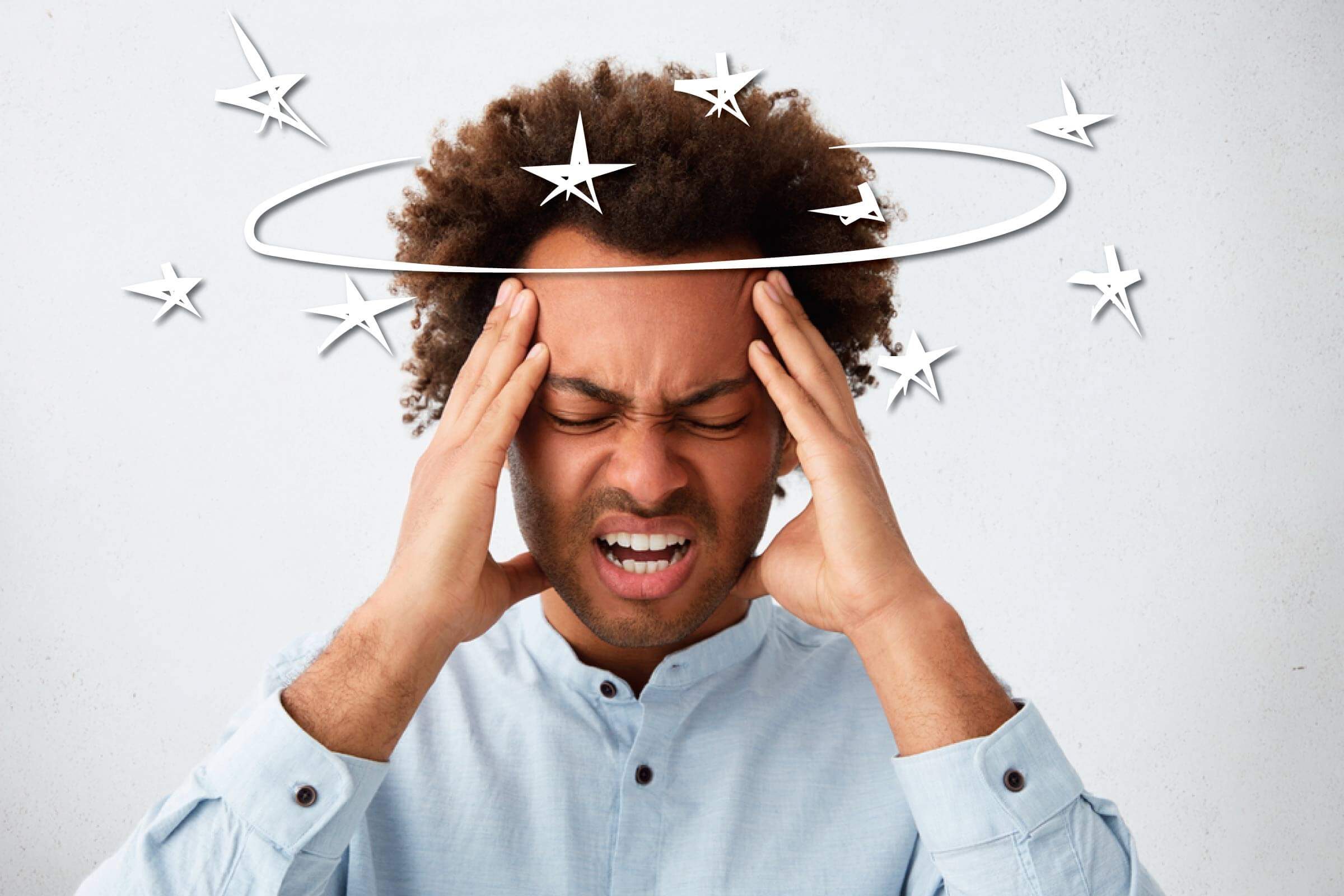Brain vertigo, a common condition that affects balance and equilibrium, can be a distressing and disorienting experience. In this comprehensive guide, we will delve into the causes, diagnosis, and treatment options for brain vertigo, empowering you with the knowledge to manage this condition effectively.
Vertigo Definition and Causes

Vertigo is a sensation of dizziness or disorientation that is often accompanied by a feeling of movement, even when the person is stationary. It can be a symptom of a variety of underlying medical conditions, including inner ear disorders, neurological problems, and cardiovascular issues.
Types of Vertigo
There are two main types of vertigo:
- Peripheral vertigois caused by a problem with the inner ear, which is responsible for balance. Symptoms of peripheral vertigo include:
- Spinning sensation
- Nausea
- Vomiting
- Hearing loss
- Tinnitus (ringing in the ears)
- Central vertigois caused by a problem with the brain, specifically the cerebellum or brainstem. Symptoms of central vertigo include:
- Unsteadiness
- Double vision
- Slurred speech
- Numbness or weakness on one side of the body
- Loss of consciousness
Causes of Brain Vertigo
Brain vertigo can be caused by a variety of conditions, including:
- Stroke
- Transient ischemic attack (TIA)
- Multiple sclerosis
- Brain tumor
- Meningitis
- Encephalitis
- Head injury
- Cervical vertigo (a condition that affects the neck)
Symptoms of Vertigo
The symptoms of vertigo can vary depending on the underlying cause. The following table summarizes the symptoms associated with different types of vertigo:
| Type of Vertigo | Symptoms |
|---|---|
| Peripheral Vertigo | Spinning sensation, nausea, vomiting, hearing loss, tinnitus |
| Central Vertigo | Unsteadiness, double vision, slurred speech, numbness or weakness on one side of the body, loss of consciousness |
Brain Anatomy and Vertigo

The brain plays a crucial role in maintaining balance and equilibrium, primarily through the coordinated function of specific structures. These structures include the vestibular system, cerebellum, and brainstem.
Vestibular System
The vestibular system consists of the inner ear’s semicircular canals and otolith organs. The semicircular canals sense rotational movements, while the otolith organs detect linear acceleration and gravity.
- Semicircular Canals:Each ear has three semicircular canals, oriented in different planes. They contain fluid and sensory cells with hair cells that respond to angular acceleration.
- Otolith Organs:The utricle and saccule are otolith organs located in the inner ear. They contain sensory cells with calcium carbonate crystals (otoconia) that respond to linear acceleration and gravity.
Cerebellum
The cerebellum is located at the back of the brain and plays a role in coordinating motor movements, including those related to balance. It receives input from the vestibular system and other sensory receptors to fine-tune body movements and maintain equilibrium.
Brainstem
The brainstem, specifically the brainstem nuclei, is involved in processing and integrating sensory information from the vestibular system and other sources. It coordinates balance-related reflexes and helps maintain posture and eye movements during head movements.
Brain vertigo, also known as dizziness, can manifest as a sensation of spinning or disorientation. These symptoms can be accompanied by nausea and vertigo, which are often associated with motion sickness or inner ear problems. Nausea and vertigo symptoms can range from mild discomfort to severe episodes that disrupt daily activities.
If you experience persistent or severe brain vertigo, it’s crucial to consult a healthcare professional for proper diagnosis and treatment.
Damage or Dysfunction
Damage or dysfunction to any of these structures can disrupt the normal function of the vestibular system and lead to brain vertigo. This can result from conditions such as vestibular neuritis, Meniere’s disease, or head injuries.
Diagnostic Procedures for Brain Vertigo

To accurately diagnose brain vertigo, healthcare professionals employ various diagnostic tests to assess the underlying cause. These tests aim to evaluate the functioning of the vestibular system and identify any abnormalities or damage that may be contributing to the symptoms.
Common Diagnostic Tests
- Physical Examination:Involves a comprehensive physical examination of the head, neck, and ears, including a neurological evaluation to assess balance, coordination, and eye movements.
- Dix-Hallpike Maneuver:A specific head repositioning test used to diagnose benign paroxysmal positional vertigo (BPPV), a common cause of vertigo.
- Videonystagmography (VNG):Records eye movements in response to various head and body movements, providing insights into the function of the vestibular system.
- Electrocochleography (ECochG):Measures the electrical activity of the inner ear to assess its function and detect any abnormalities.
- Vestibular Evoked Myogenic Potentials (VEMPs):Tests the integrity of the vestibular nerve pathways by recording muscle responses in the neck and eyes in response to sound or vibration stimuli.
- Magnetic Resonance Imaging (MRI):A non-invasive imaging technique that produces detailed images of the brain and inner ear to identify any structural abnormalities or lesions.
- Computerized Tomography (CT) Scan:Another imaging technique that uses X-rays to create cross-sectional images of the brain and inner ear, providing information about bone structure and any potential abnormalities.
Limitations and Accuracy
While these diagnostic tests are valuable tools, it’s important to note their limitations and accuracy:
- Subjective Nature:Vertigo symptoms can be subjective and vary in severity, which may impact the accuracy of self-reported symptoms during testing.
- Test Specificity:Some tests may not be specific to brain vertigo and may also detect other conditions, leading to potential false positives.
- Normal Test Results:In some cases, diagnostic tests may return normal results even when vertigo symptoms are present, highlighting the need for a comprehensive evaluation.
Treatment Options for Brain Vertigo
Brain vertigo can be a debilitating condition that can significantly impact daily life. Fortunately, there are various treatment options available to alleviate symptoms and improve quality of life.
The choice of treatment depends on the underlying cause of vertigo and the severity of symptoms. Here are some of the most common treatment options:
Medication, Brain vertigo
- Anti-nausea medications:These medications, such as meclizine and promethazine, can help reduce nausea and vomiting associated with vertigo.
- Vestibular suppressants:These medications, such as diazepam and lorazepam, can help suppress the activity of the vestibular system, which is responsible for balance.
- Anticholinergics:These medications, such as scopolamine and trihexyphenidyl, can help block the effects of acetylcholine, a neurotransmitter that can contribute to vertigo.
Rehabilitation
- Vestibular rehabilitation therapy (VRT):This type of therapy involves exercises designed to improve balance and reduce dizziness.
- Balance exercises:These exercises, such as the Romberg test and Fukuda stepping test, can help strengthen the muscles responsible for balance.
- Eye exercises:These exercises, such as the Brandt-Daroff exercises, can help improve eye-head coordination and reduce dizziness.
Surgery
- Vestibular nerve section:This surgery involves cutting the vestibular nerve, which sends signals from the inner ear to the brain.
- Labyrinthine ablation:This surgery involves removing the labyrinth, the part of the inner ear responsible for balance.
It is important to consult with a healthcare professional to determine the most appropriate treatment option for your specific situation. Each treatment option has its own potential benefits and risks, which should be carefully considered before making a decision.
Rehabilitation and Prevention
Managing brain vertigo involves a combination of rehabilitation exercises, lifestyle modifications, and assistive devices. Rehabilitation exercises aim to improve balance and reduce vertigo symptoms, while lifestyle changes can help prevent future episodes.
Rehabilitation Exercises
Rehabilitation exercises for brain vertigo focus on improving balance and stability. These exercises may include:
- Balance training: Exercises that challenge your balance, such as standing on one leg or walking on uneven surfaces.
- Vestibular exercises: Exercises that stimulate the vestibular system, such as head rolls or the Epley maneuver.
- Strength training: Exercises that strengthen the muscles that support the head and neck.
Lifestyle Modifications
Certain lifestyle modifications can help prevent brain vertigo, such as:
- Avoiding triggers: Identifying and avoiding triggers that may cause vertigo, such as caffeine, alcohol, or certain head movements.
- Maintaining a healthy weight: Excess weight can put pressure on the vestibular system.
- Getting regular exercise: Exercise can improve balance and circulation.
- Managing stress: Stress can worsen vertigo symptoms.
Assistive Devices
Assistive devices can provide support and stability for people with brain vertigo. These devices may include:
- Canes or walkers: These devices can provide extra support when walking.
- Balance braces: These braces can help improve stability and reduce the risk of falls.
- Vestibular implants: These devices can stimulate the vestibular system and reduce vertigo symptoms.
Epilogue

Brain vertigo can be a complex condition, but with proper diagnosis and treatment, it is possible to manage the symptoms and improve quality of life. By understanding the causes, diagnostic procedures, and treatment options, you can take an active role in your health journey and regain a sense of balance and well-being.
